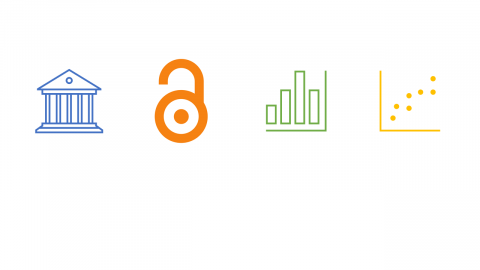
Université Paris-Saclay's Open Science Monitor
As part of the national plan for Open Science, the French Ministry of Higher Education, Research and Innovation (MESRI, which is now called MESR) produced, in 2019, a Baromètre de la Science Ouverte (Open Science Monitor) to measure how open access French publications are.
The results presented below were compiled according to the protocol and computer code developed by the MESRI, which was used for the national monitor. The computer code put online by the MESRI was re-adapted and shared in turn by Université de Lorraine , in order for it to be applied to a university context. Data processing and graph creation were carried out using this code for years 2020 and 2021.
In order to obtain complete and comparable results, the Ministry offered to replicate their own exact methodology for all institutions willing to have an Open Science Monitor. As a consequence, Université Paris-Saclay is now using this version.
Source data for Université Paris-Saclay’s Open Science Monitor come from Scopus, Web of Science, HAL; Lens.org, Pubmed. Data extraction was partly carried out via the university bibliometric app, BiblioLabs.
The target scope includes all publications from research units for which Université Paris-Saclay is either a supervisor or partner. Monitors from different associate institutions (Université d’Evry and Université de Versailles Saint Quentin) are also online.
Open publications at Université Paris-Saclay
Open publications by subject
Open publications by publisher
Open publications in open archives
Open PhD theses at Université Paris-Saclay
Open research data, code and softwares at Université Paris-Saclay
In an ideal Open Science environment, all the products of scientific research should be shared with everyone. This not only includes all publications, but also all the data and tools that have been necessary to produce the published results. The more openly shared softwares, code and data, the easier it is to verify and reuse the results.
That is why there are several openness levels under the name of open research data, code and softwares : simply mentioning when one uses a dataset, code piece or software makes their results more visible and easier to verify, but does not help people who need to reuse them. When someone is the creator of the data, code or software they are sharing, it makes it easier. However the only optimal way to make their data, code or software reusable is when authors share them freely on open repositories.
Publishers now often request authors to write down, besides funding information, all the datasets a publication uses and how available they are for sharing. This is a good practice that helps opening research data.
Université Paris-Saclay supports Open Science initiatives!
Contact: Libraries, Information and Open Science department: science.ouverteuniversite-paris-saclay.fr
